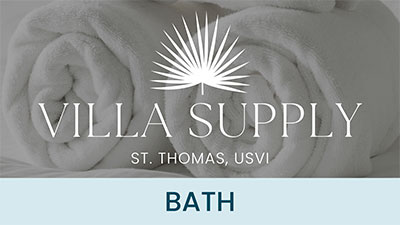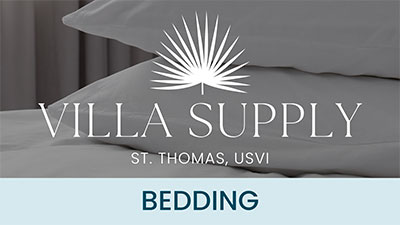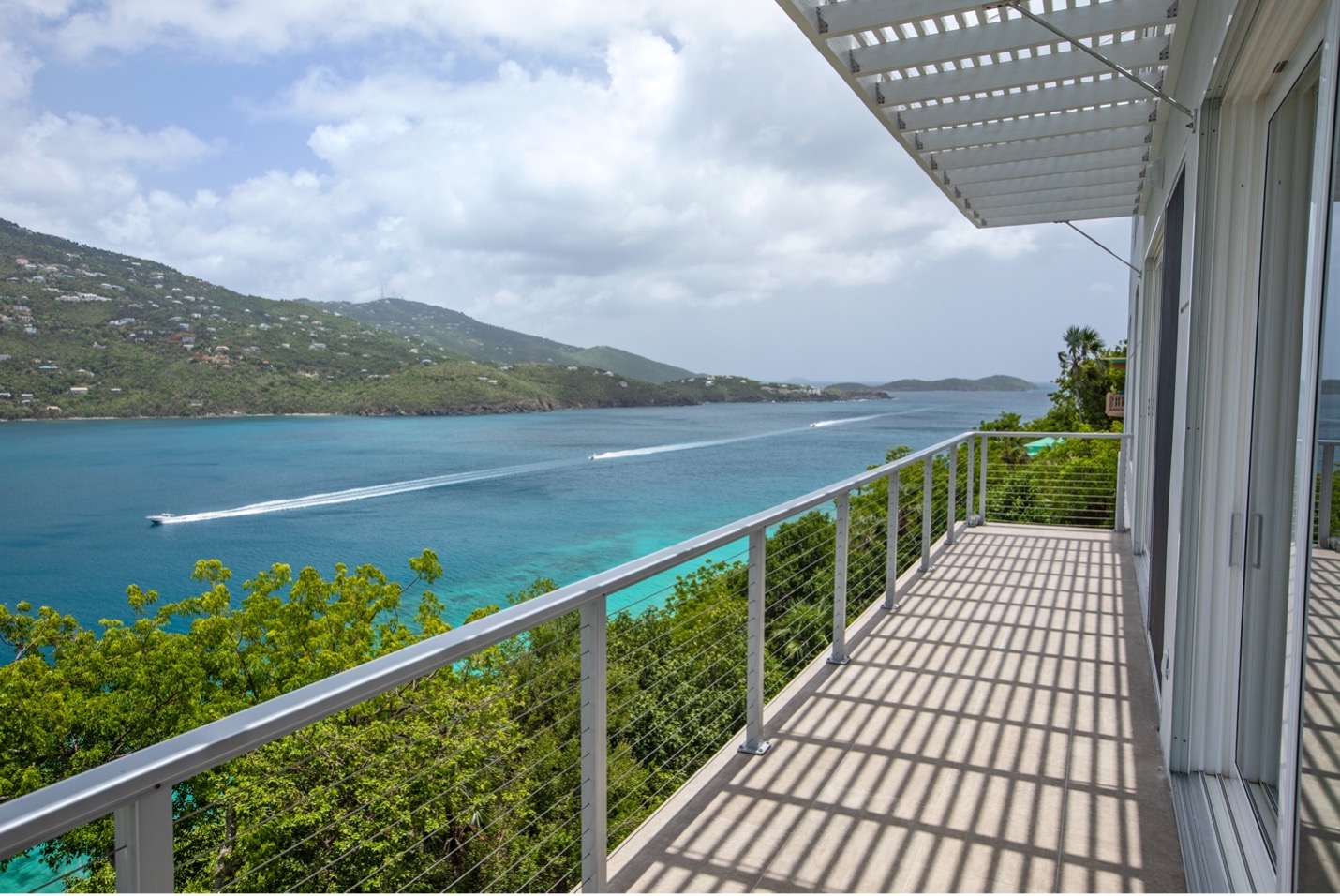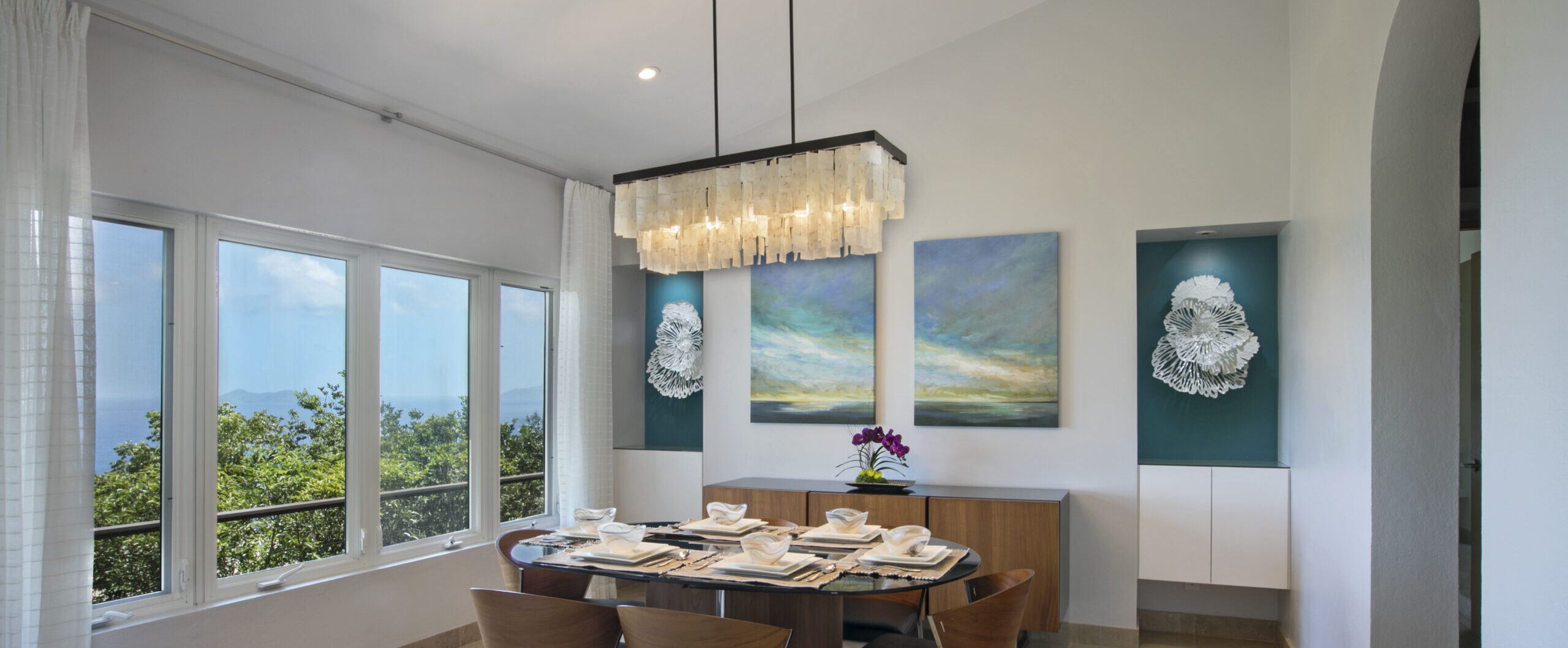When decorating or designing a home in the Caribbean, many choices are informed by the island environment and lifestyle. The factors that drew us to want a home in this location to begin with need to be considered in the design; otherwise, it’s just another stateside home. The climate and the access to water sports like sailing, diving, and of course, just “beachin’ it” likely drew our clients to the island. It’s a laid-back, relaxed, indoor and outdoor kind of life here. So how do we make choices in design that support that ease of living?
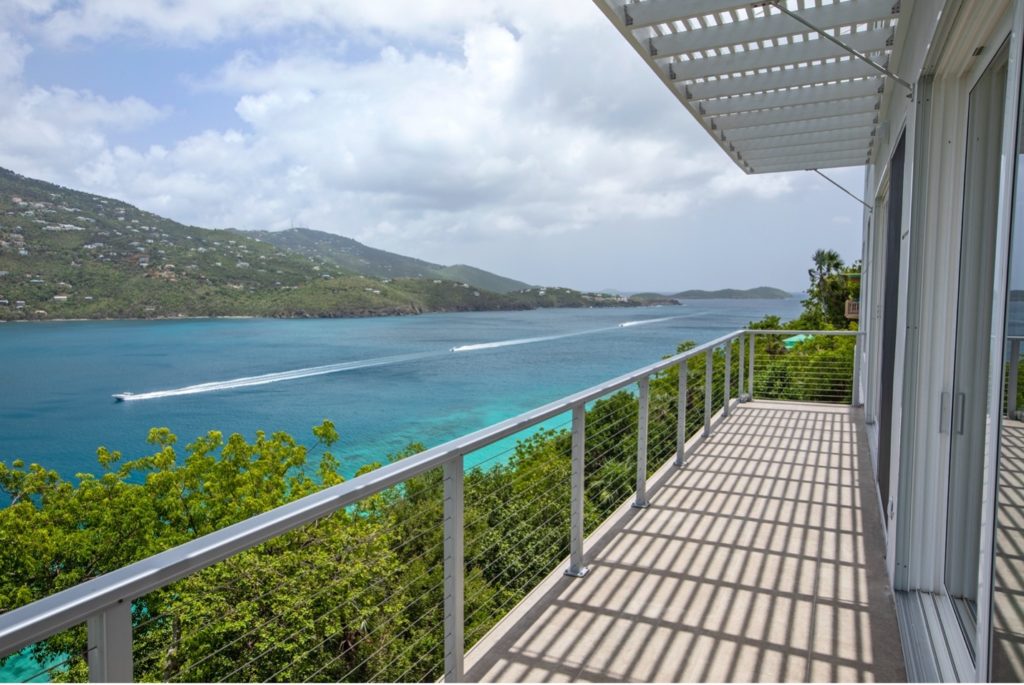
Island Life Considerations:
The tropical tradewinds that greet you as you step off the plane carry with them a lot of humidity and salt content and, at certain times of the year, Saharan dust. In St. Thomas, at 18.64N, the UV rays can be intense here. For all these reasons, some things that work well in Florida don’t work well in the Caribbean. In addition, people live with their windows and doors open most of the time, rarely turning on the AC. Some fine wood finishes will find that change in humidity and temperature challenging, not to mention it will wreak havoc on wallpaper!
1. Nail Heads
No nail heads! It’s regrettable, because we love the look, but they rust almost EVERY time. Rarely can you find a furniture piece with solid brass or plastic nail heads, and it isn’t easy to be sure when specifying. If you don’t want rust stains on your furniture, just say no to nail heads.
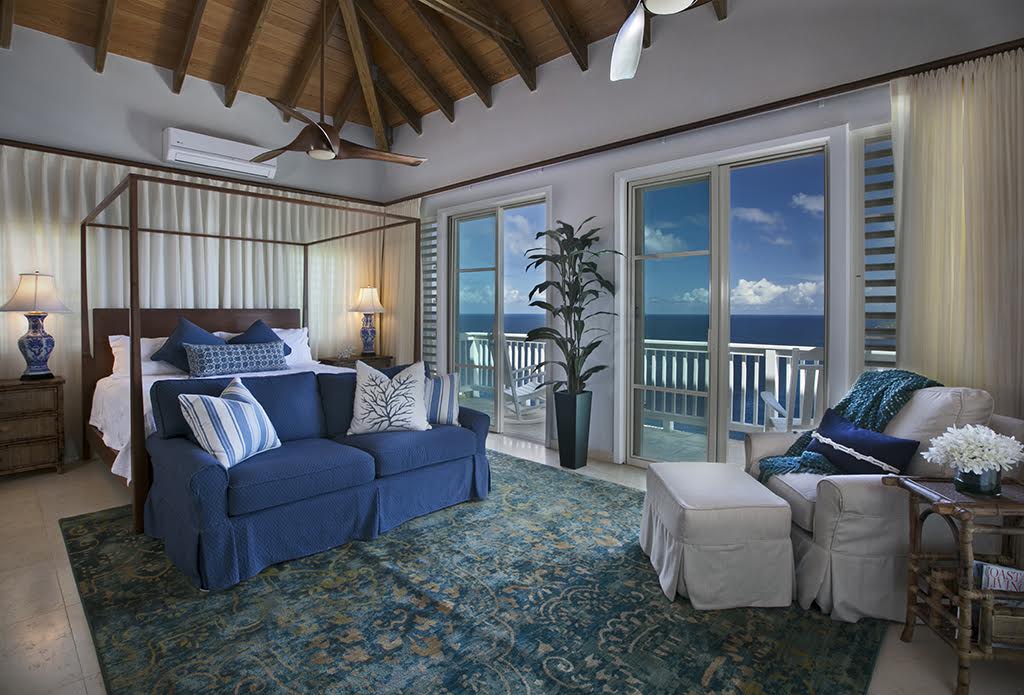
2. Draperies
You can make draperies from outdoor fabrics. I know every drapery lover reading this just cringed, but hear me out on this one. Performance fabric technology has come a long way in the past ten years, and there are quite a few performance fabrics out there that have a gorgeous drapable hand. There are certainly not as many choices as we might wish for, but there are plenty of lovely options. (Thibaut has some of the best, in my opinion.) Nobody wants to specify silk drapery for a client’s home and then have it crumble from UV exposure after a couple of years. Also, not all islands have the same dry-cleaning facilities to clean and properly press delicate drapes. If longevity is vital, look for solution-dyed acrylics and polyesters.
3. Cushions
There is a debate about down fill for cushions that centers around humidity. I love down fill pillows and down-wrapped cushions for seating because they are super comfy and luxurious. If the home is air-conditioned all the time, then there’s no need to worry. When fresh air is cooling the space due to the open windows and doors, the humidity can make the down musty and not so fluffy over time. We usually use a poly-fill-down alternative. If needed, the pillow inserts can be machine washed, which is a real bonus if you rent your property or have pets.
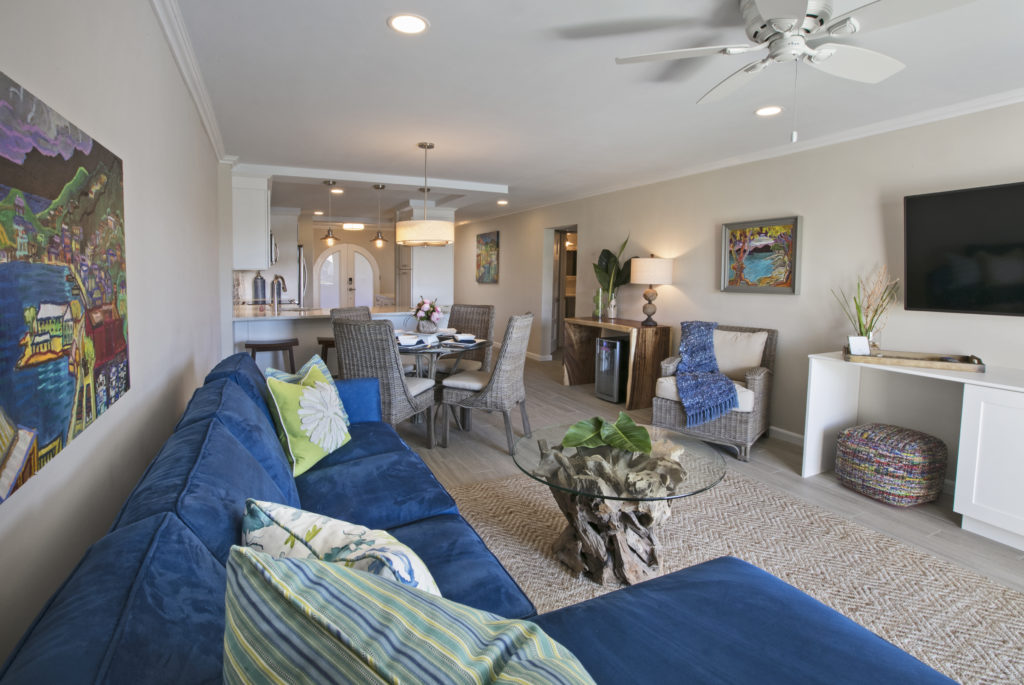
4. Cabinetry
Cabinetry on legs is a good idea. You would be surprised how often you can end up with water on the floor. Maybe it’s from an issue with the dishwasher, or perhaps it’s a leaking window, but being able to get under the cabinet boxes to clean is a beautiful thing. Also, standing water doesn’t mean your cabinets will need to be replaced.
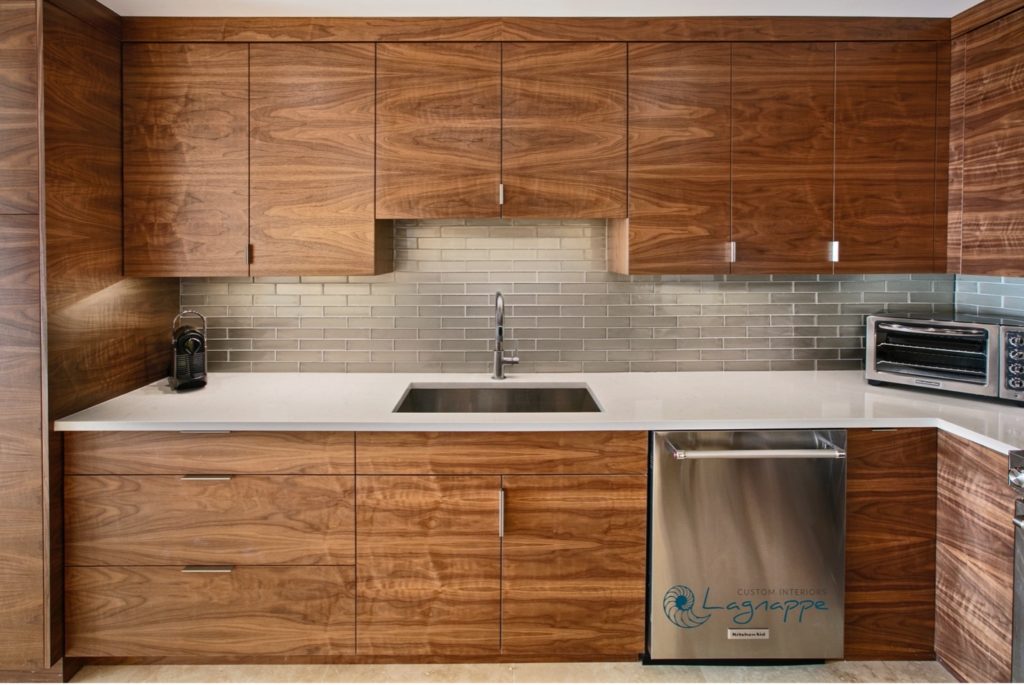
5. Metal Finishes
Be careful about your metal finishes. If it’s not outdoor rated, I don’t trust it. Again, it’s the whole open-air humidity and salt issue here. If you want to take a chance on metal finishes, wax them when they first arrive. I’ve used stainless wax from the marine store a few times with good results.
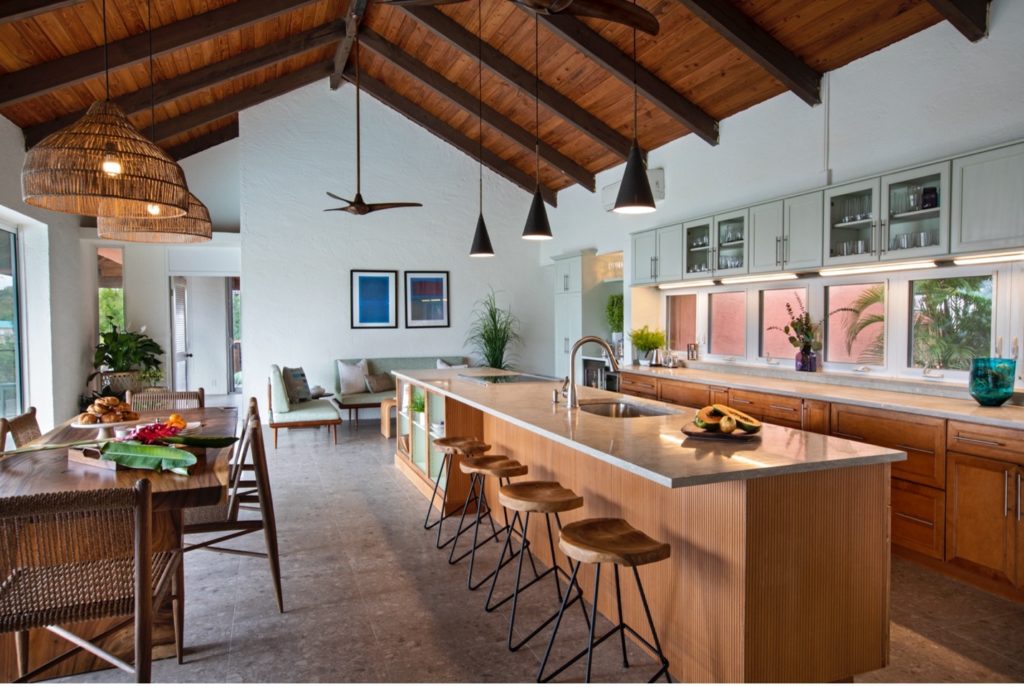
6. Wood
All wood expands in the humidity, so inset doors and drawers can be a struggle. From kitchen cabinets to dresser drawers, overlay styles are the way to go. When specifying custom dressers, we often request that the maker leave extra space in anticipation of the wood expanding.
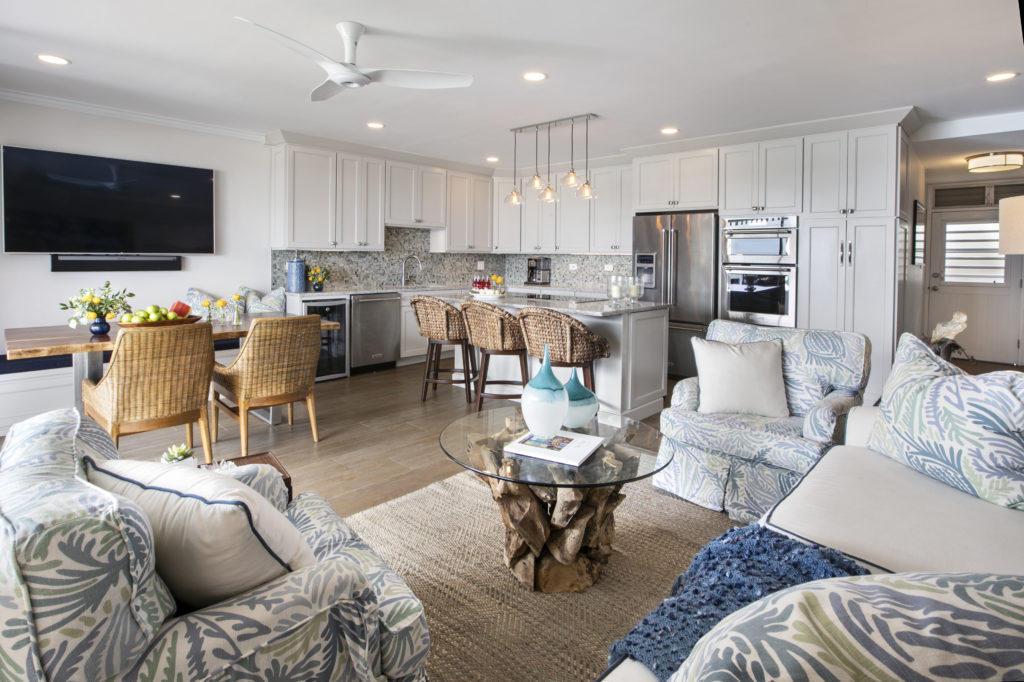
7. Porcelain
Porcelain tile floors might be your new best friend. We just don’t recommend actual wood flooring ever. With the number of times, we end up with water on the floor, salty dripping kids running around, and the near-constant sand that accompanies this lifestyle, tile that can be mopped is a lifesaver. I never want to feel like I have to yell at my daughter about coming into the house straight off the beach. We live at the beach to enjoy it, so we choose materials that are easy to live with daily. There are so many lovely styles with great looks out there that you may not even miss natural wood. If you can’t do “fake,” go with the stone or cement look!
8. MDF
Don’t do MDF. Again, with the humidity, MDF just doesn’t last well in this climate. Sometimes the price is so reasonable that clients say, “I’ll just throw it out and get another inexpensive piece in a couple of years.” We don’t recommend this. There is only so much land available on an island for the dump. If you buy quality, you can plan to keep it for years to come.
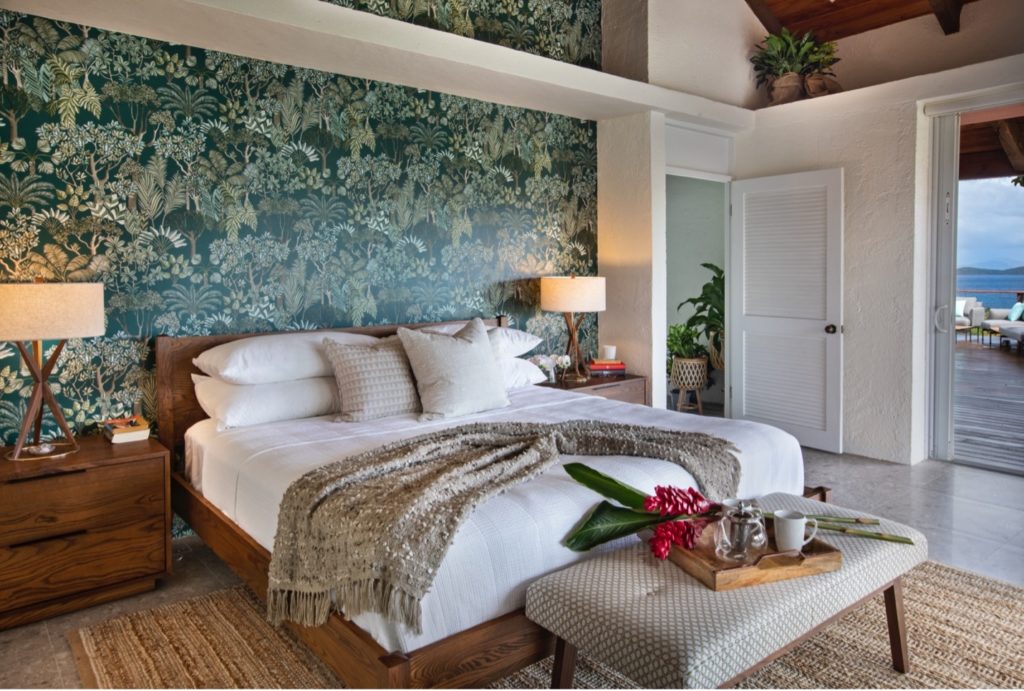
9. Wallpaper
Choose wallpaper and other wall finishes carefully on a case-by-case basis. In a humid climate, especially if you are renting your home, you will want something that is wipeable. We love the grasscloth wallpaper but look for the vinyl versions; there are some great ones out there.
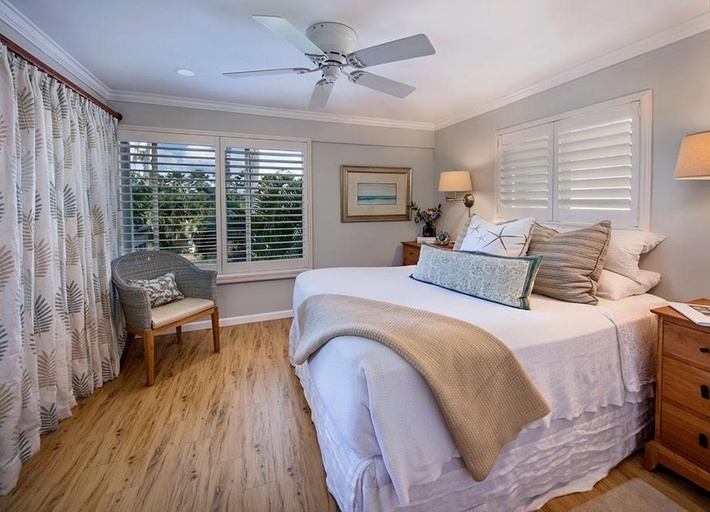
10. Window Treatments
PVC window treatments can be your best friend! Blinds and shutters made from PVC are easy to care for too. It rains in the tropics at least a little bit every day. If your windows are open, your shutters will be sprinkled on, and the PVC can be easily wiped down with a sponge and Windex to clean.
When choosing materials in the Caribbean, the number one priority is selecting materials that contribute to easy to care for spaces that work with the island lifestyle. It’s all about creating interiors that encourage relaxation in an Island Paradise!



